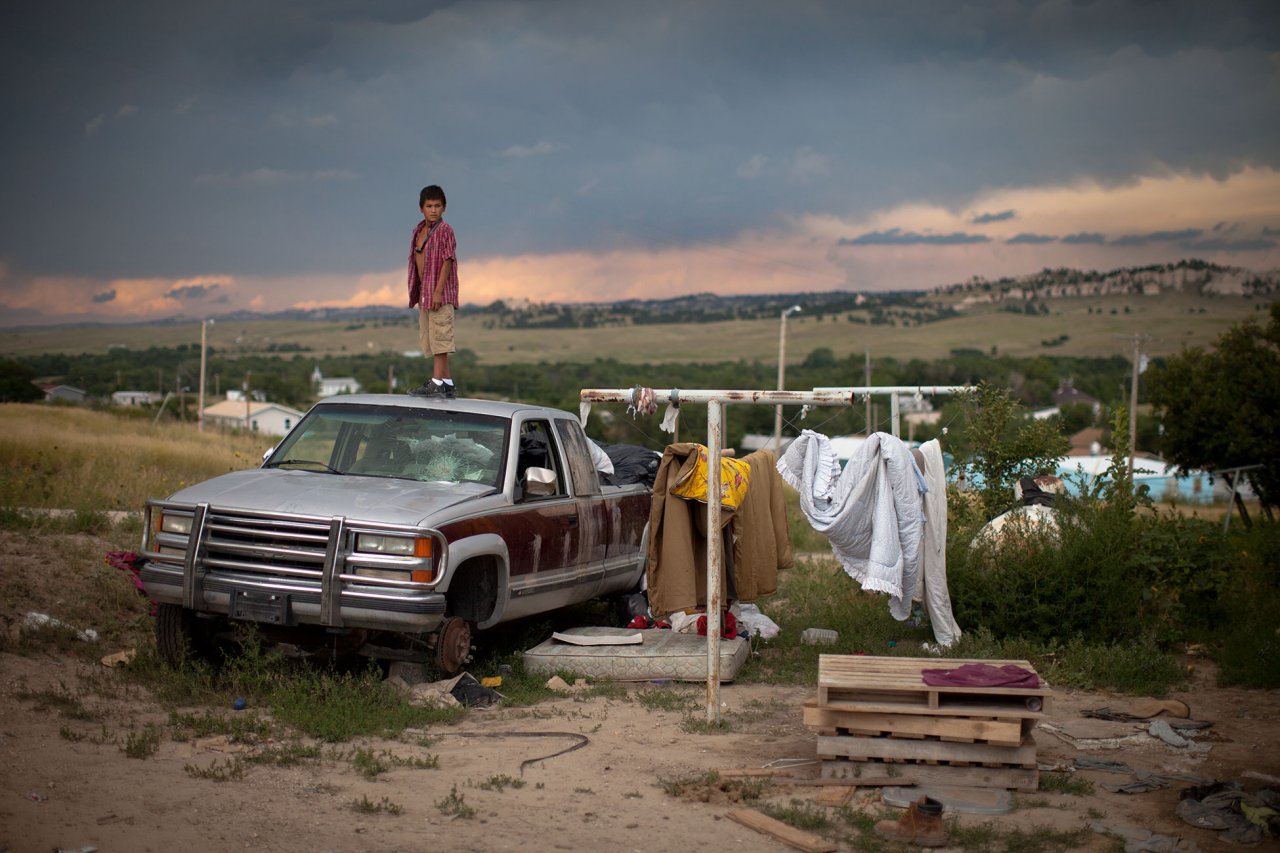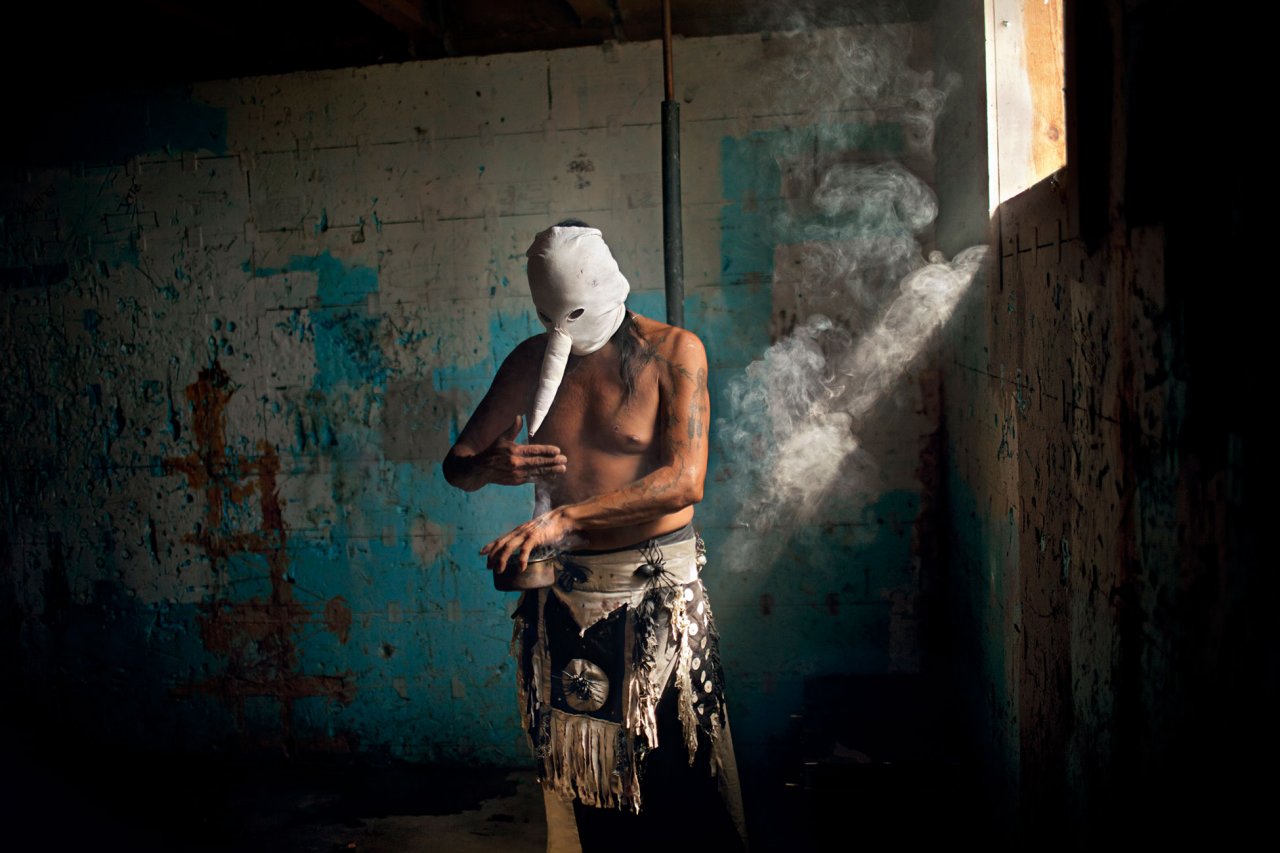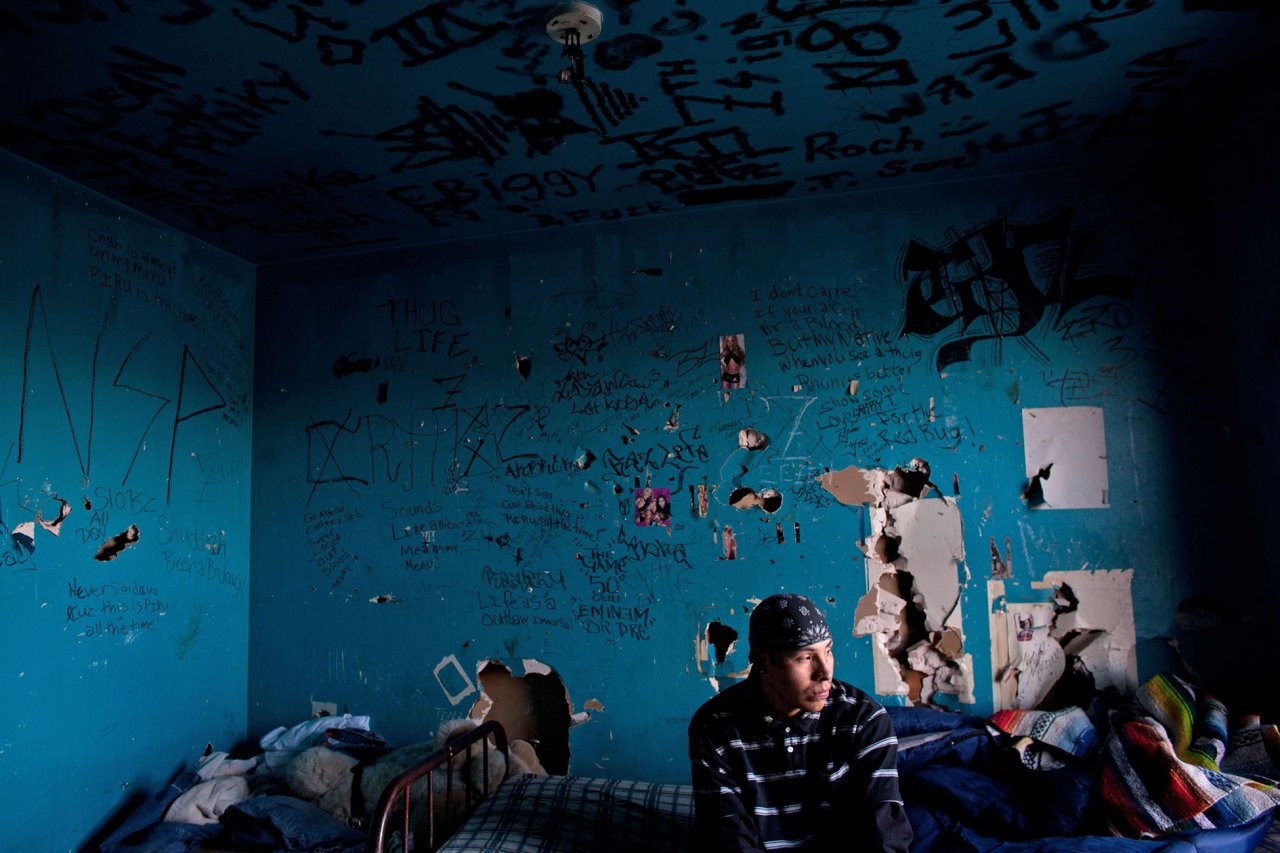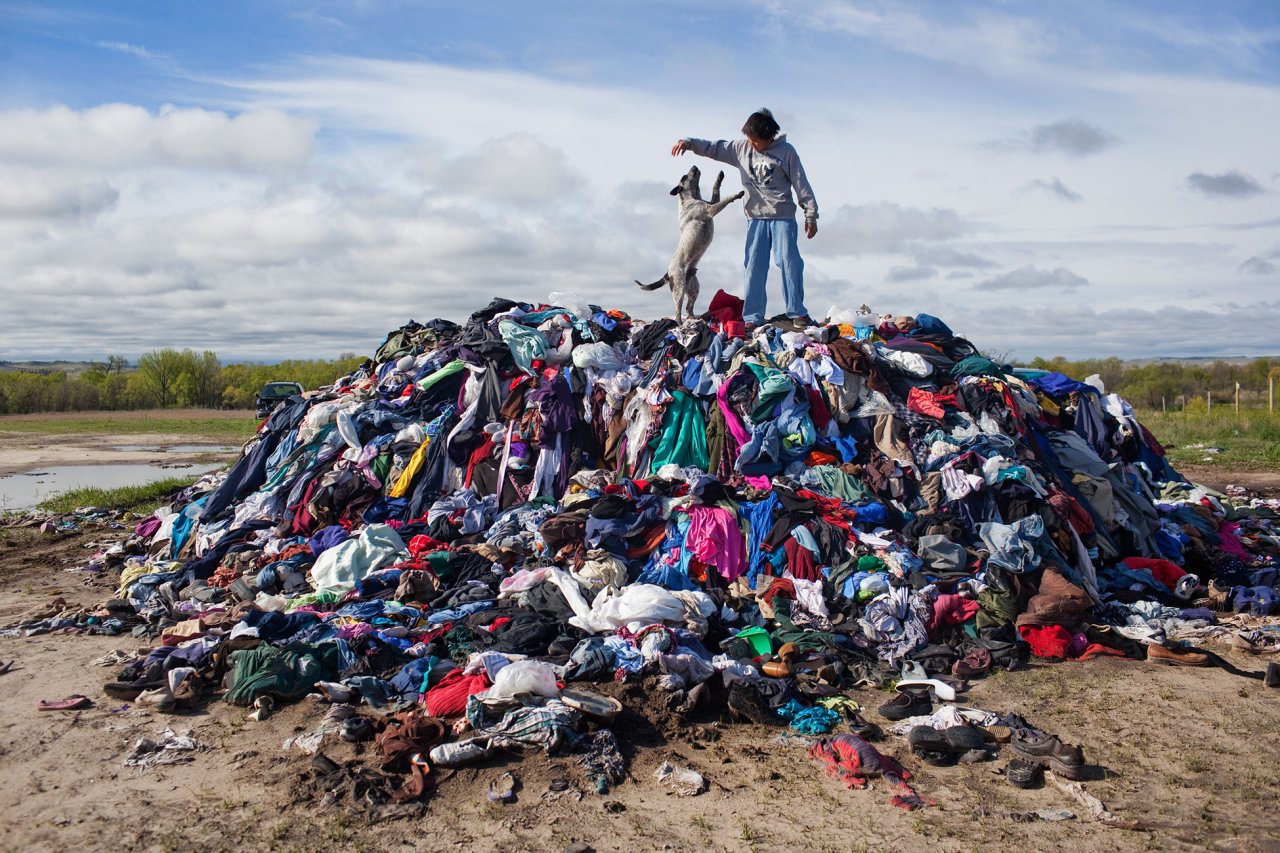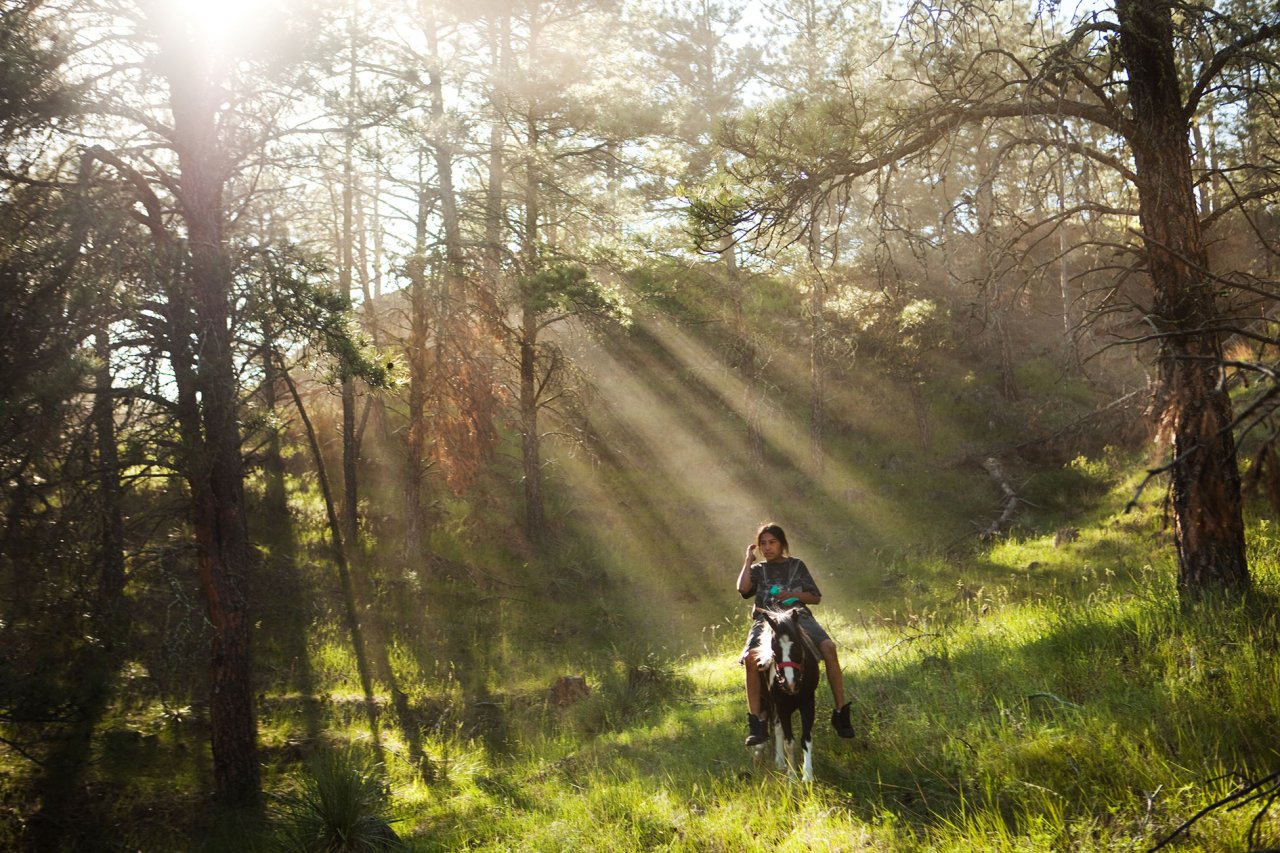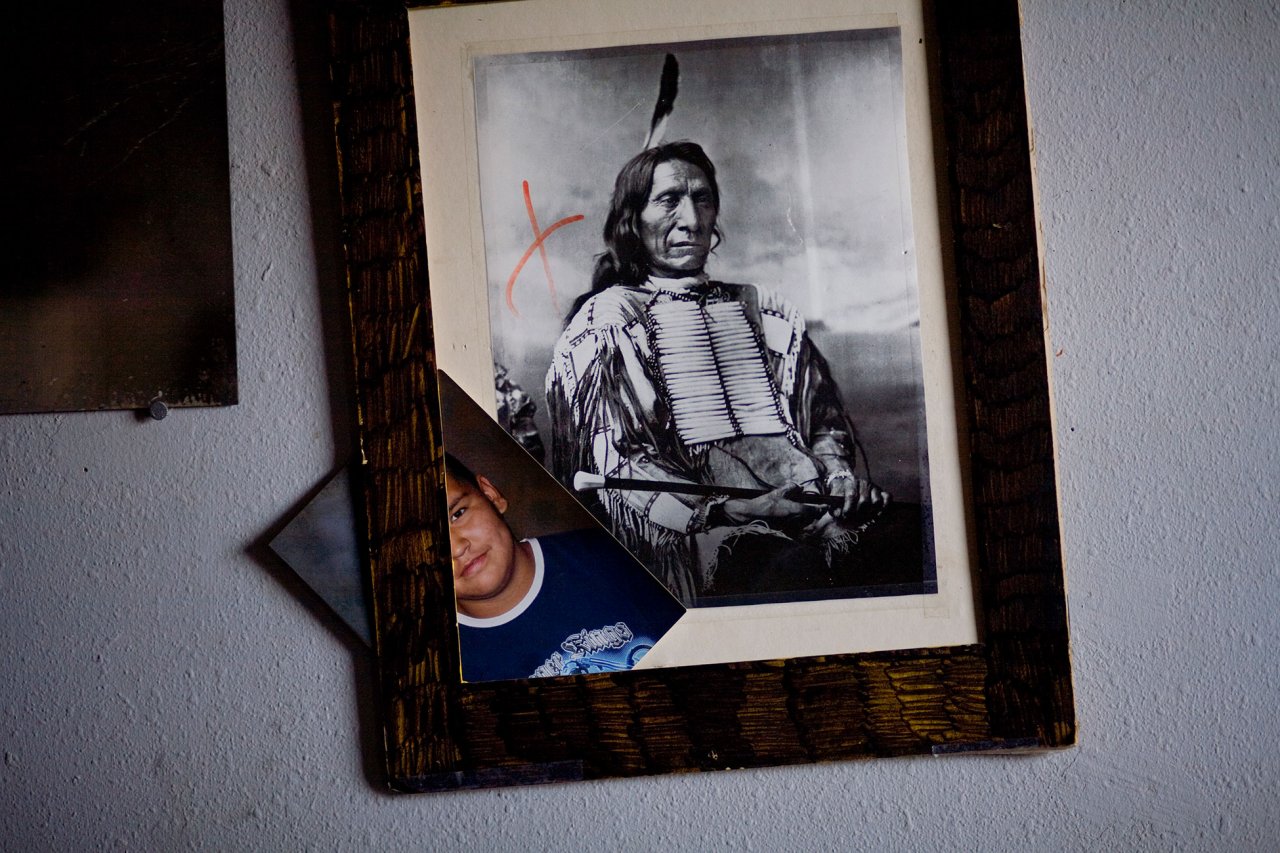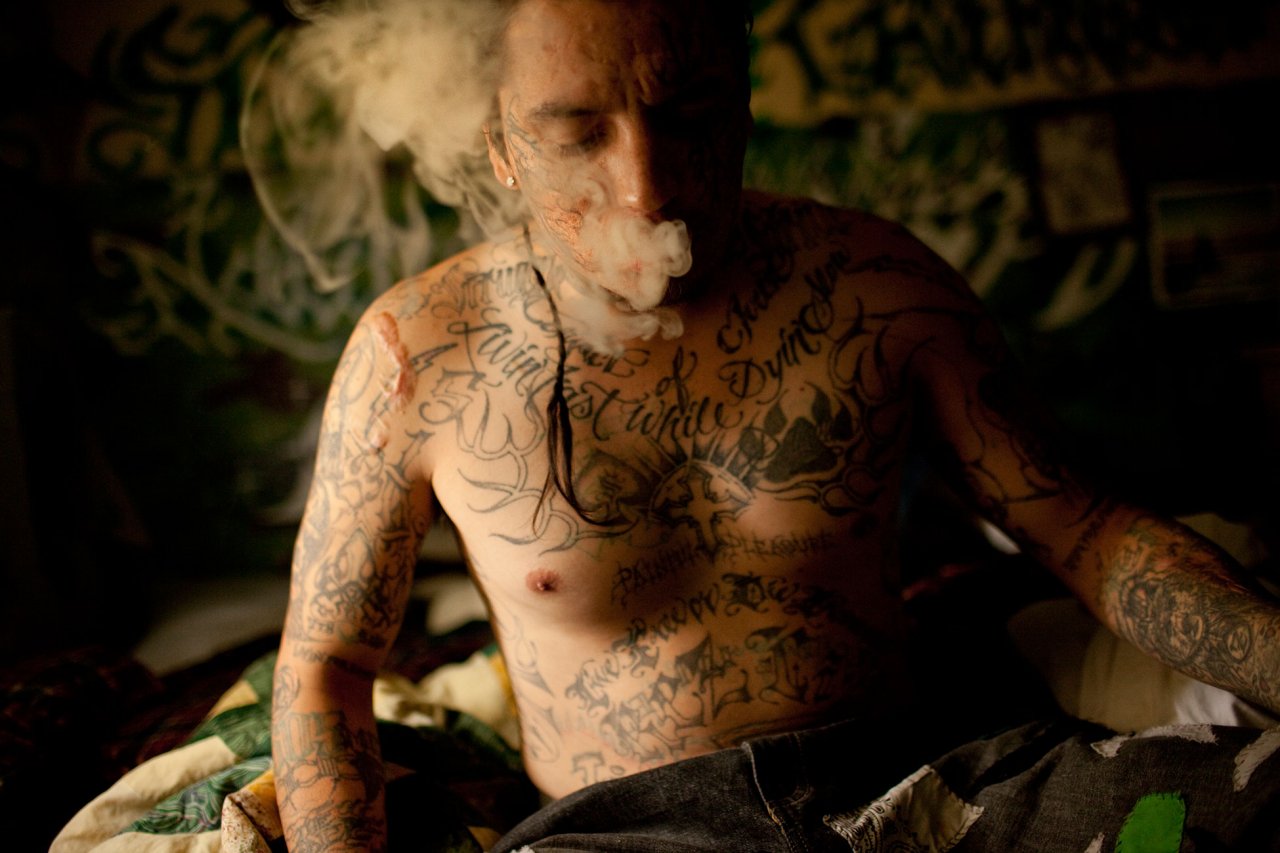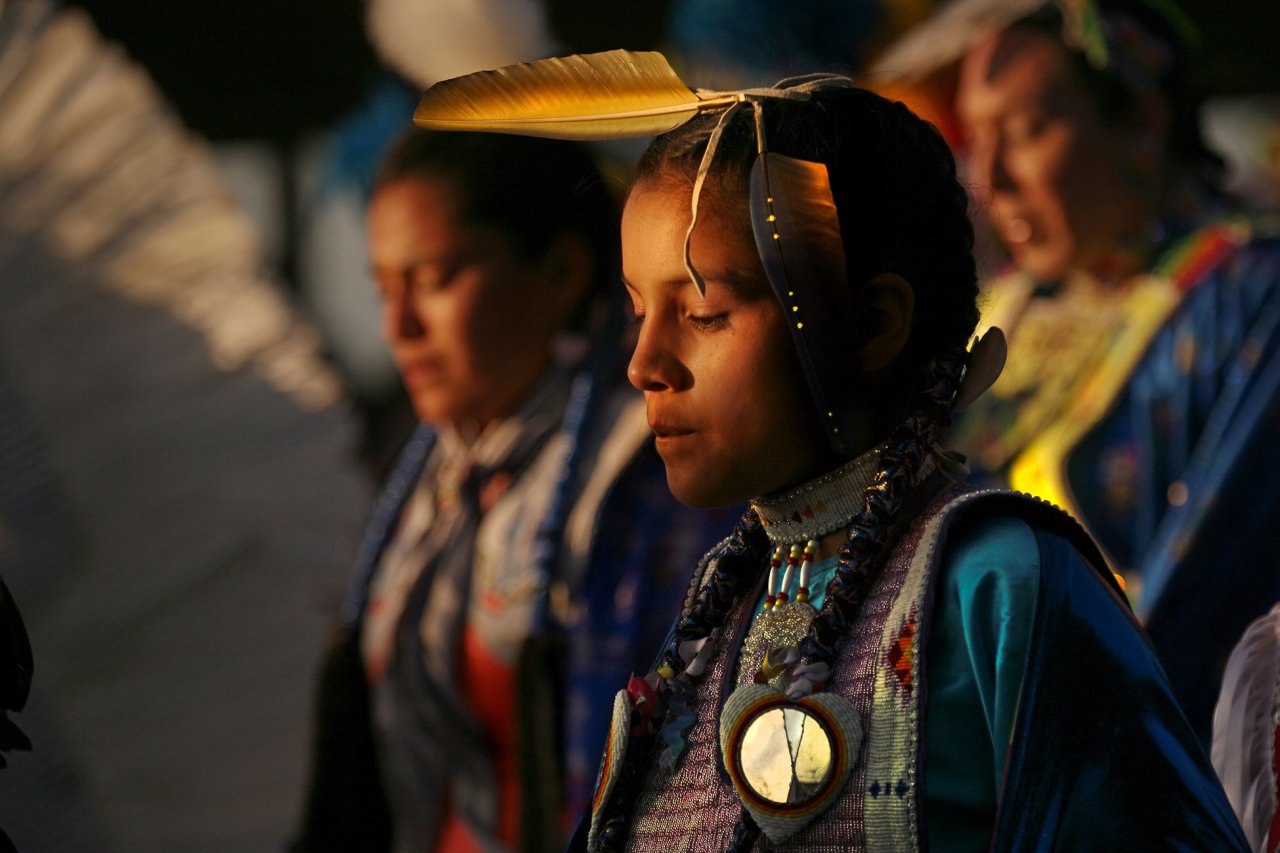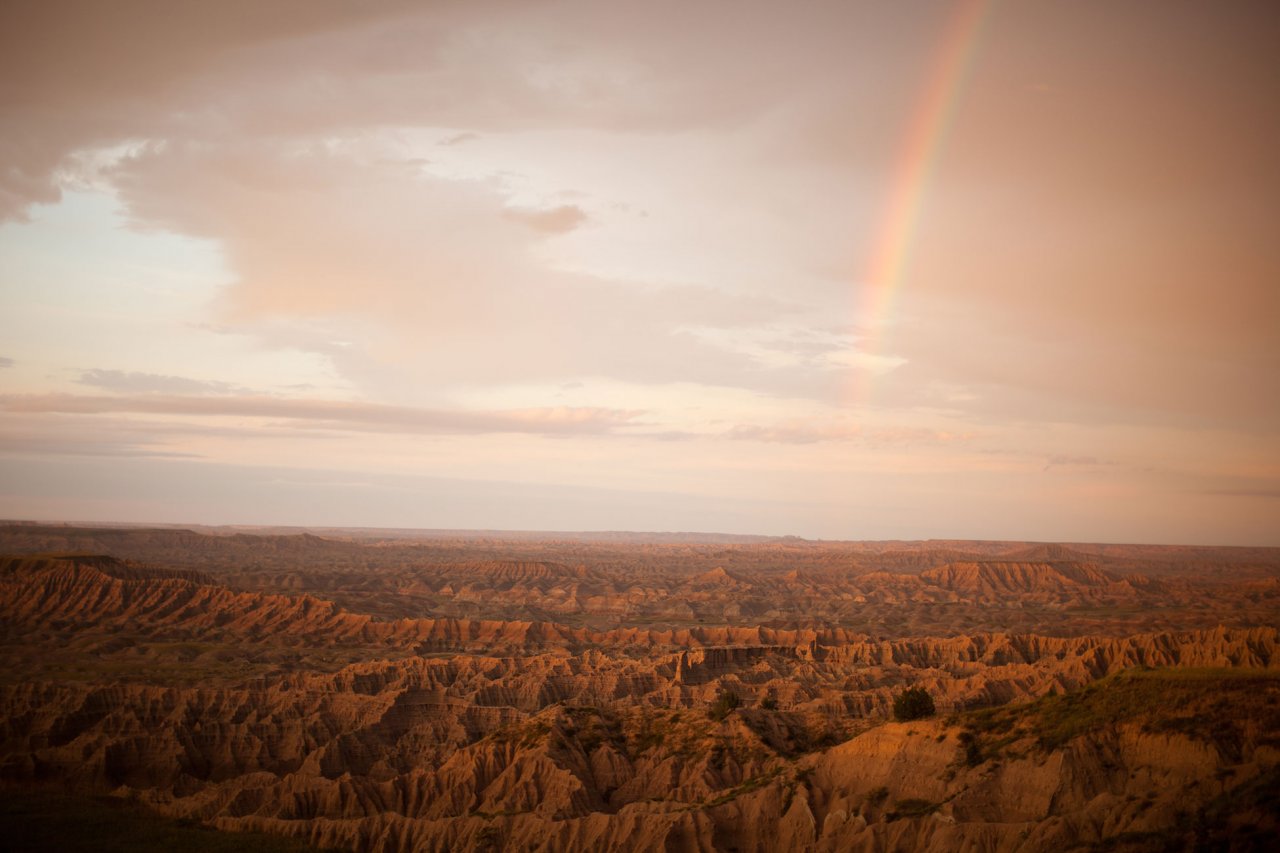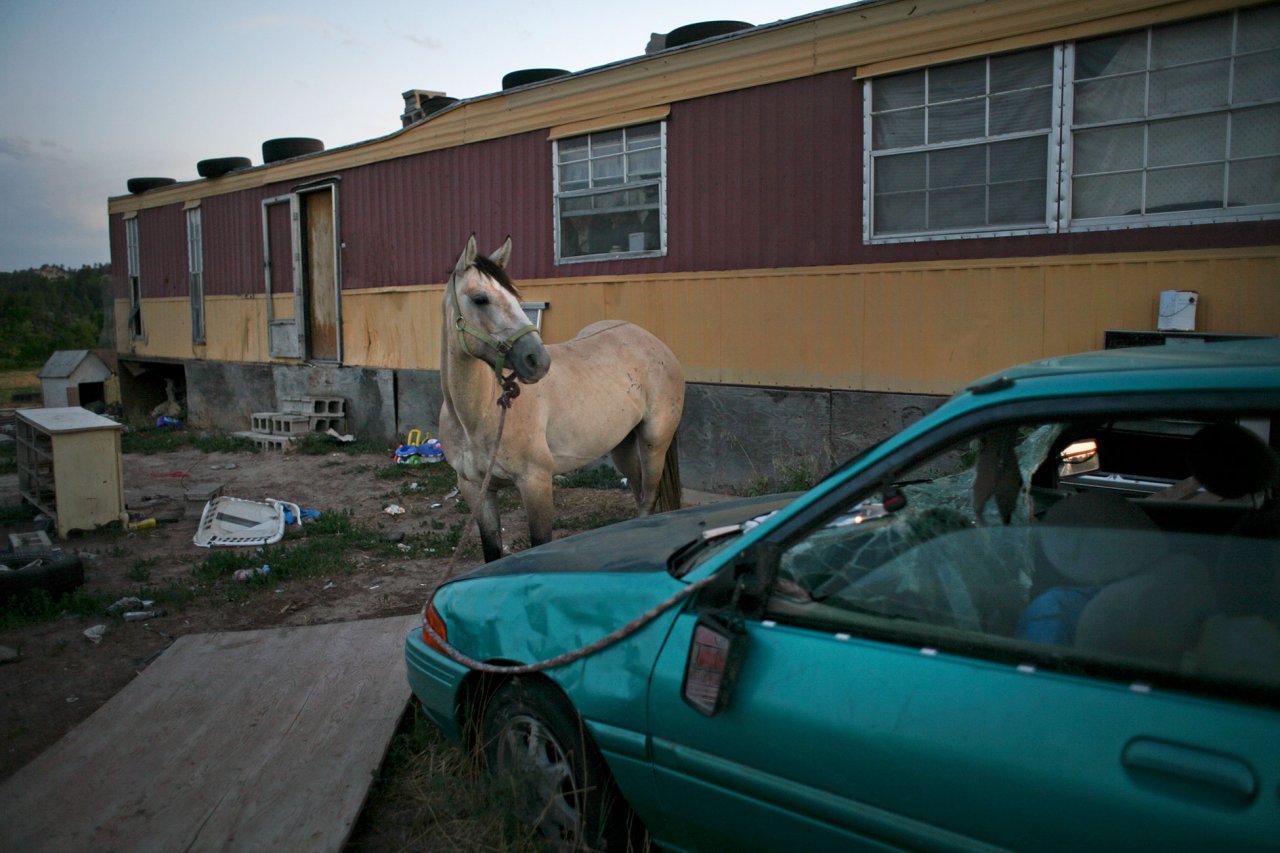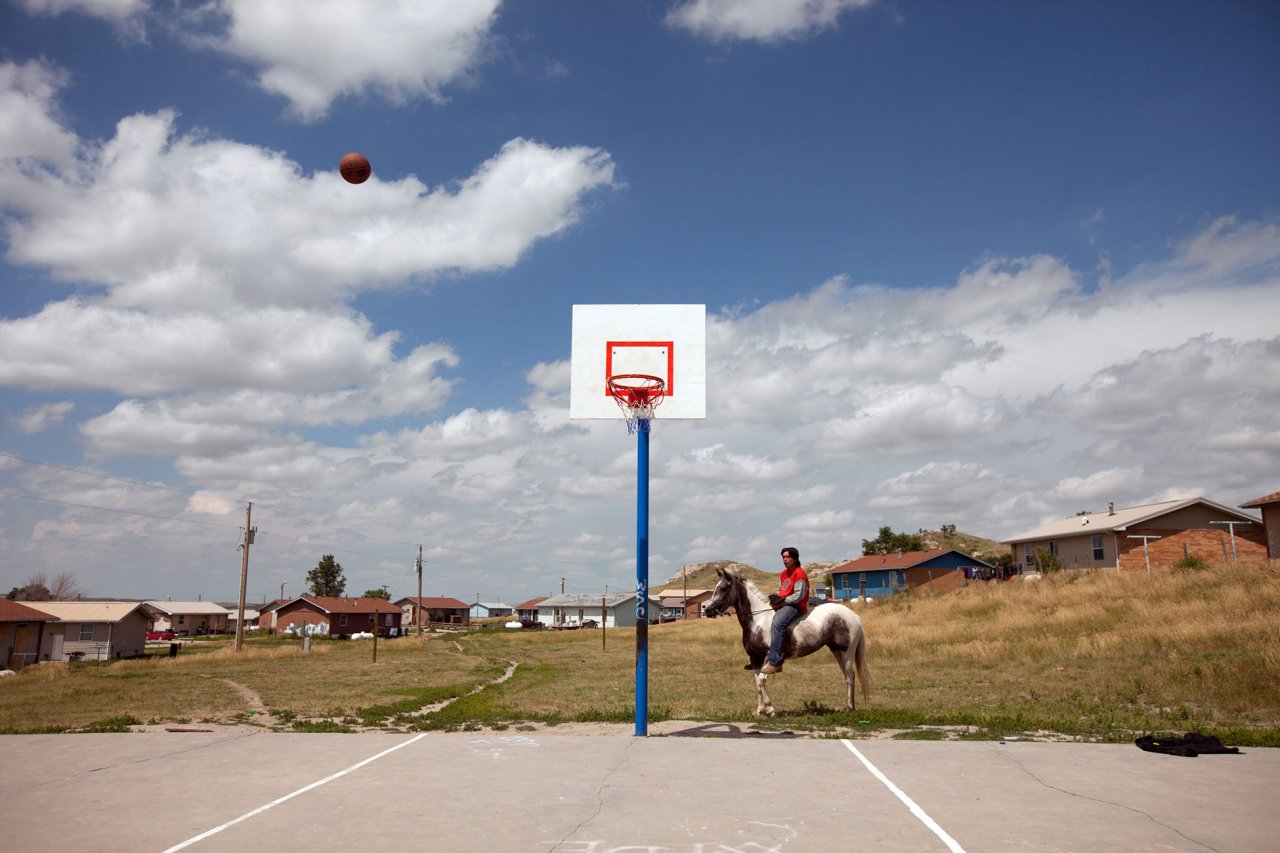Mitakuye Oyasin
Aaron Huey
On 29 December, 1890, the US 7th Cavalry surrounded a Sioux encampment at Wounded Knee Creek in South Dakota and massacred Chief Spotted Elk and three hundred prisoners of war. After the so-called battle, twenty Congressional Medals of Honor were awarded.
Today the Oglala Lakota live in the shadow of Wounded Knee on the Pine Ridge Indian Reservation.
I started photographing on Pine Ridge in 2005 as part of a story about poverty in America. In the beginning, it was all just statistics: a 90 per cent unemployment rate, a 70 per cent school dropout rate, and a male life expectancy of 47 years. Over time, it became clear to me that these statistics came from a deep historical wound. And then my photographs of Pine Ridge became a story about a prisoner-of-war camp, a story about genocide, a story about stolen lands.
Years after beginning this project, the story and my relationships on the reservation are more complex than ever. The story has evolved to be about my family, about the people who call me brother and nephew and uncle.
‘Mitakuye Oyasin’, translated to English, means ‘All my relations’. The Okala Lakota say this at the beginning and at the end of ceremonies. One of my brothers, Andrew Ironshell, says it means ‘a responsibility, almost a call to action, or an acknowledgement that you are a relative to the land, and to the environment and the human beings around you’.
I have stumbled into something sacred on Pine Ridge. I don’t know which part is the ceremony. I think, maybe, it is the whole thing.


